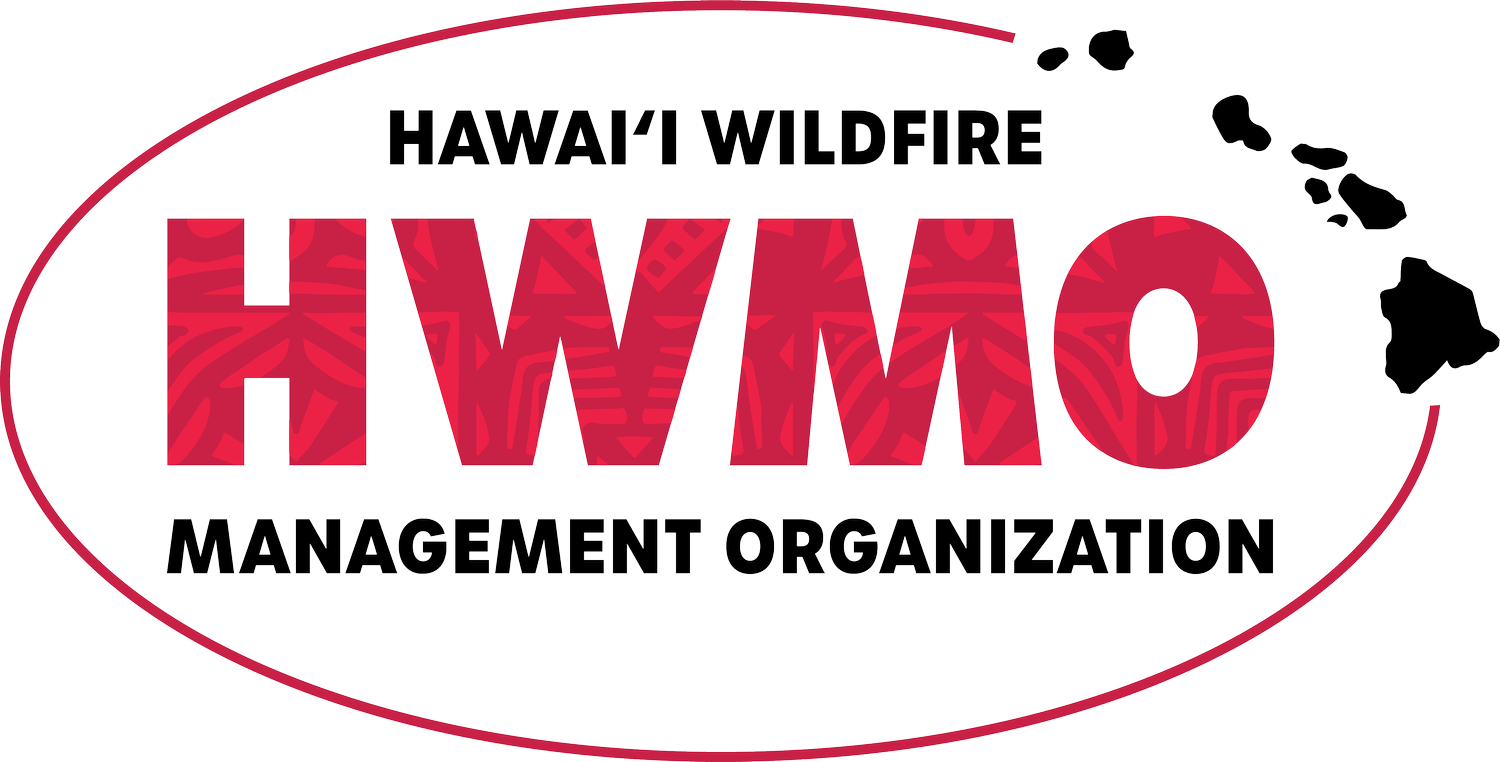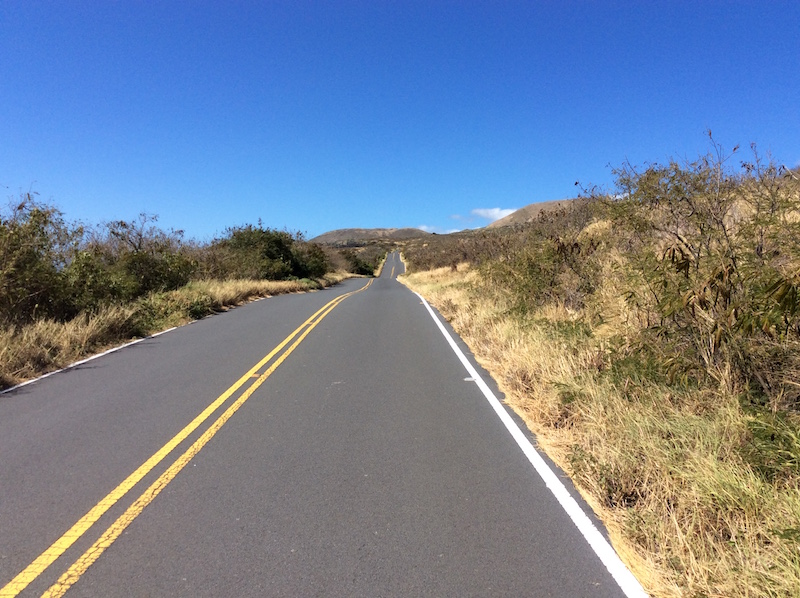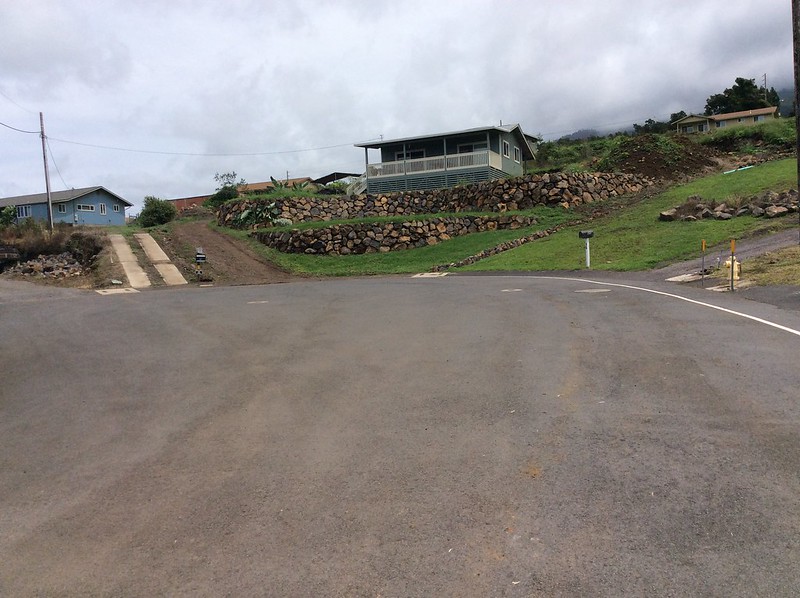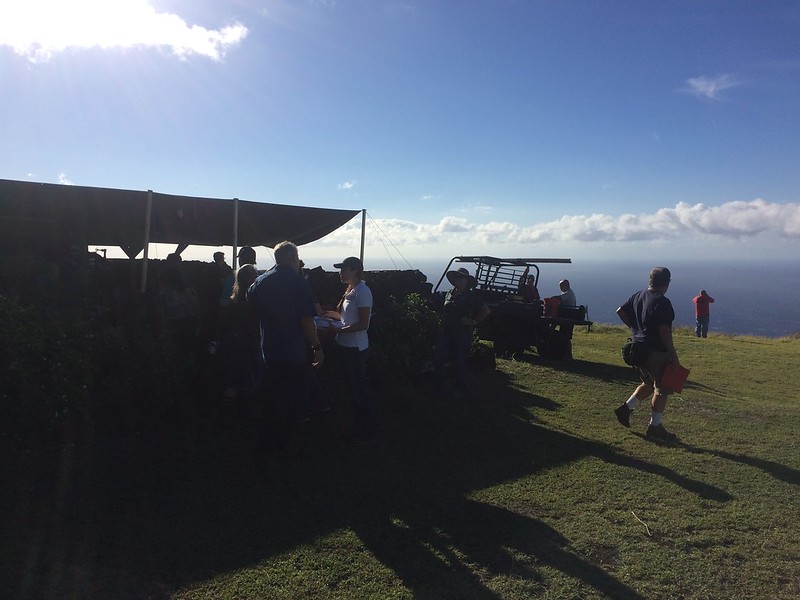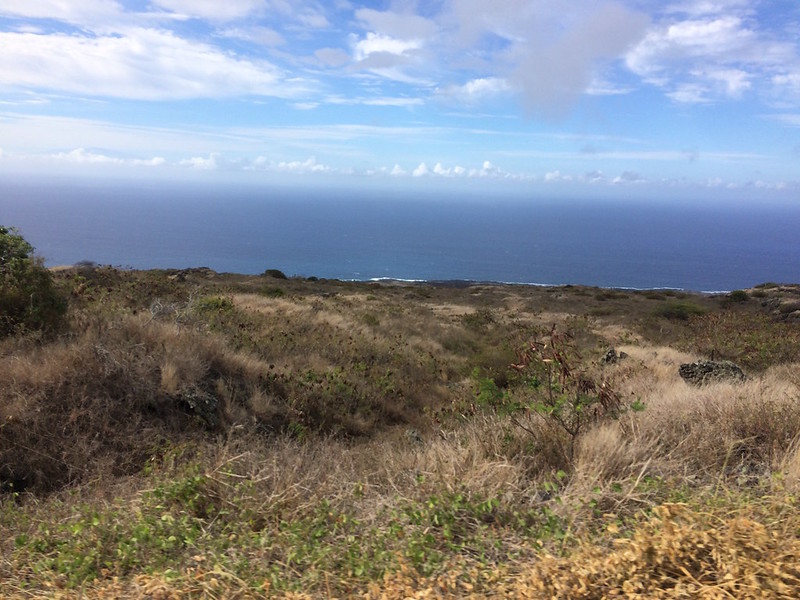Kahikinui Ready, Set, Go! Workshop and Firewise Hazard Assessment
Assessment team poses in front of a local example of xeriscaping using Firewise principles and native/adapted plants.
Kahikinui continued its incredible year of wildfire protection efforts on November 6, 2016. The homestead on the southern slopes of Haleakala on Maui is a small, but very active community that is on pace to become one of the first Firewise Communities on the island (and one of the first Hawaiian homesteads in the state). As one of the requirements, HWMO, Leeward Haleakala Watershed Restoration Partnership, and Department of Hawaiian Home Lands conducted a wildfire hazard assessment with Kahikinui Firewise Committee members. Together, they drove around the bumpy 4-WD roads of the community to take note of common wildfire hazards and good Firewise practices already being implemented. The greatest concerns were the high fuel loads on the highway, between homes, and in the surrounding wildland areas. Lack of water resources and firefighting access and ingress/egress were also noticeable concerns.
Assessment team walks the perimeter of a Firewise home within the community.
The Kahikinui Firewise Committee is already planning and working on multiple projects to address these concerns. With a contribution from Sempra Auwahi Wind, they will replace their front gate and remove flammable vegetation at the entrance of the community in December. The proactive committee is a great model for other communities at-risk of wildfires — even with the numerous challenges they face, they have persisted to take small, but important, steps to reduce wildfire hazards to protect their beloved home.
